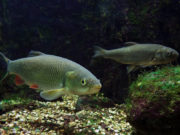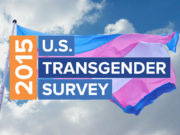Part 3: Biological Development
In PART 1 we speculated on epigenetic transgender impact. PART 2 delved into the micro world of gene regulation. In part 3, of this 3 part installment series on Epigenetics and the Transgender Brain, we’ll explore Biological Developmental Impacts on brain development. At the conclusion, we’ll then speculate on Transgender implications.
Abstract
Epigenetics is the branch of genetic science focusing on the chemical changes happening exogenously of the DNA sequence. May 2015, the Medical University of Vienna issued a press release, says the report: “While the biological gender is usually[my emphasis] manifested in the physical appearance, the individual gender identity is not immediately discernible and primarily established in the psyche of a human being.” Conclusive genetic science has not yet determined the locus, or the loci, of gender identity.
Epigenetics influences brain development more than any other human structure
 Epigenetics influences brain development more than any other human structure, so logically, modifications, errors, and alterations in the brain would be more susceptible to exogenous deviations. The National Academy of Science(NAS) convened a session in Washington D.C. on March 28-29, 2014, as a part of the Sackler Colloquia initiative, reinforcing Biological, Imprinting, and Behavioral effects on the developing brain.
Epigenetics influences brain development more than any other human structure, so logically, modifications, errors, and alterations in the brain would be more susceptible to exogenous deviations. The National Academy of Science(NAS) convened a session in Washington D.C. on March 28-29, 2014, as a part of the Sackler Colloquia initiative, reinforcing Biological, Imprinting, and Behavioral effects on the developing brain.
Biological Development
Epigenetic interactions affect gene silencing. Messenger RNAs(mRNAs) are important in development and regulation of gene activity. They influence gene expression in transference of information from the DNA, ergo, silencing and ignoring genes by a specific design. This information must also include the instructions bonded to the DNA in the epigenetic layer. These gene expression changes are of the phenotype, and are either of a cis-acting or trans-acting process. Cis(Latin: lying next to; same side) -acting elements develop short sequences, and trans-acting factors bind the cis-acting sequences to control gene expression. Trans-acting factors may react on gene expression located at a great physical distance from one another or even located on different chromosomes.
While the biological gender is usually manifested in the physical appearance, the individual gender identity is not immediately discernible and primarily established in the psyche of a human being.
 SRY is an important transcription factor. Sex Determining Region Y Protein(SRY) is responsible for developing male sex determination. This binding protein modifies (Sry-related HMG-bOX) SOX9 protein. This protein will inhibit the production of female reproductive organs, promoting the development of male reproductive organs. Mutations can occur on the SOX9 protein, or if any related receptors or activators are not present, resulting in sexual reversal or even hermaphroditism.
SRY is an important transcription factor. Sex Determining Region Y Protein(SRY) is responsible for developing male sex determination. This binding protein modifies (Sry-related HMG-bOX) SOX9 protein. This protein will inhibit the production of female reproductive organs, promoting the development of male reproductive organs. Mutations can occur on the SOX9 protein, or if any related receptors or activators are not present, resulting in sexual reversal or even hermaphroditism.
Behavior is responsible for all aspects of learning and memory. SOX3 protein regulates memory and brain development. Dynamic and static behavior on the genetic level also must be considered impacting brain development. Epigenetic affectation on these proteins seems logical related to methylation and modification.
Considering SRY interrelationships, there may, yet to be discovered, ncRNAs connecting these SOX9 and SOX3 stages, of SRY protein activation, de-activation and modification. Continued research of the 30 SOX cell fate determining proteins, may lead to further discoveries into areas of the brain responsible for sex and gender identities and behaviors.
Non-coding RNA are gaining recognition in the context of brain development
Transfer RNAs(tRNAs) and ribosomal RNAs(rRNAs), are functionally important non-coding RNAs  (ncRNAs) in the gene regulation process. “Non-coding RNAs are gaining recognition in the context of brain development.” (Goff et al) There is a purported unknown abundance of ncRNAs in the human genome. Of those recently discovered, their role in genetic development is not yet determined. Some of these ncRNAs have spurious purpose, and considered junk RNA. Theory holds that there are hundred-fold scores of ncRNAs yet to be discovered. Considering, there is still a possible determinant biological cause for transgender brain development, future discoveries are encouraging.
(ncRNAs) in the gene regulation process. “Non-coding RNAs are gaining recognition in the context of brain development.” (Goff et al) There is a purported unknown abundance of ncRNAs in the human genome. Of those recently discovered, their role in genetic development is not yet determined. Some of these ncRNAs have spurious purpose, and considered junk RNA. Theory holds that there are hundred-fold scores of ncRNAs yet to be discovered. Considering, there is still a possible determinant biological cause for transgender brain development, future discoveries are encouraging.
Genomic Imprinting
Parent-of-origin gene expression imprints are established during cell development. Where this is of particular interest is the interaction between the developing hypothalamus and the placenta. One function of the Hypothalamus is to control hormone secretions of the pituitary gland. Any epigenetic influence on this imprinting may lead to modified epigenetic marks on the Imprint Control Regions(ICR) of genes. ICRs are primarily maternally inherited, which conversely indicates they may also be secondarily paternally inherited.
Placental development has the highest number of imprinted genes. This is considered an evolutionary product, referred to as conflict hypothesis. The mother conserves her genetic resources, where the father dominates by shutting down matriarchal genes so patriarchal genes can flourish. Paternal Expressed Gene 3(PEG3) is strongly expressed in the placenta and is highly active in the adult brain. PEG3 is maternal-imprinted and paternally expressed, yet the immediate role it plays on development is unclear. Hypothetically, actuated cis- or trans- expression, it is possible for epigenetic instructions to be misinterpreted.
It’s not just that development and behavioral memory are rough analogs of each other, but rather that they are molecular homologues of each other…
Behavior Implications
Behavioral Epigenetics, a relatively new field of epigenetic study, refers to ways environment triggers biological modifications to brain cell development. Behavior, memory, and learning are interrelated as they are affected by changes in experience. Histone modification and DNA methylation are essential in this process. “It’s not just that development and behavioral memory are rough analogs of each other, but rather that they are molecular homologues of each other,” says J.David Sweat, director of the McKnight Brian Institute at UA of Birmingham.
Once epigenetic marks were considered immutable, sort of like an evolutionary cloning of genes. Studies in transgenerational, or heritable, inheritance have reversed this theory. Now dynamic modification of genes through environmental impact is widely accepted to be more accurate. Behavioral etiology will continue to grow and correlate relationships between genetic make up and environmental interaction.
Studying twin’s DNA, where one twin identifies as transgender, will narrow down the effective proteins, amino acids, genes, et cetera prone to transgender identification. Since twins have the same genes, this has great promise, provided willing individuals are approached prior to starting HRT.
Circadian Rhythm
Histone modification and DNA methylation are key components in chromatin manufacture and gene regulation. “Remodeling of chromatin constitutes a critical interface of transducing signals, such as light or nutrient availability, and how these are interpreted by the cell to generate permissive or silenced states for transcription.” (Sahar S.[author], Center for Epigenetics and Metabolism, School of Medicine, University of California).

Circadian rhythms can be varied in duration and cycle, dependent upon a specifically defined feedback loop. It is well established that fetal development has stages, and these stages could very well be moderated by specific cellular rhythms. For example, fetal brain development begins about week 5, while fetal external genital development occurs about week 11. This developmental phasing may be attributed to a repressive circadian clock. May this gestational delay confuse epigenetic encoding, leading to dimorphism errors, resulting in gender identity dysmorphia?
Conclusion
The Darwinian Nature versus Nurture debate appears to be nearing extinction. As science makes further progress into gene and cell development, it seems very likely that nature AND nurture(N2) will be revised to be mutually inclusive. The Nature/Nurture collusion potentially determining, along with the kaleidoscopic stew of our DNA, RNA, and Epi-DNA, origins of gender identity, along with other presently unknown symptoms, diseases, and syndromes.
Nature(endogenous genetics) establishes biologic connections, determining brain reaction to experience. Nurture(exogenous experience) refines synaptic matrix connections, and contains instructions far too complex to retain in the DNA genome. Conjecture of inclusive male/female dynamic and static developmental modifications may help focus the kaleidoscope of possible neural areas affecting individual gender identity.
Series Conclusion
The sheer volume of research into th is series was phenomenal. Sheaves of information
is series was phenomenal. Sheaves of information
were distilled in a pedagogical effort to draw speculative conclusions to the transgender
conditioning of the human brain. Science continues to progress and one day, no doubt, will identify the loci of the brain where identity is formed.
Postscript: Science and scientists, need also to be more conscious using correct terminology, with respect to differentiation of gender and sex. There were instances I found, while reading, where sex was used in place of gender, further hindering clear scientific pronouncement.
mir, irini, peace, amn,
-jahn































